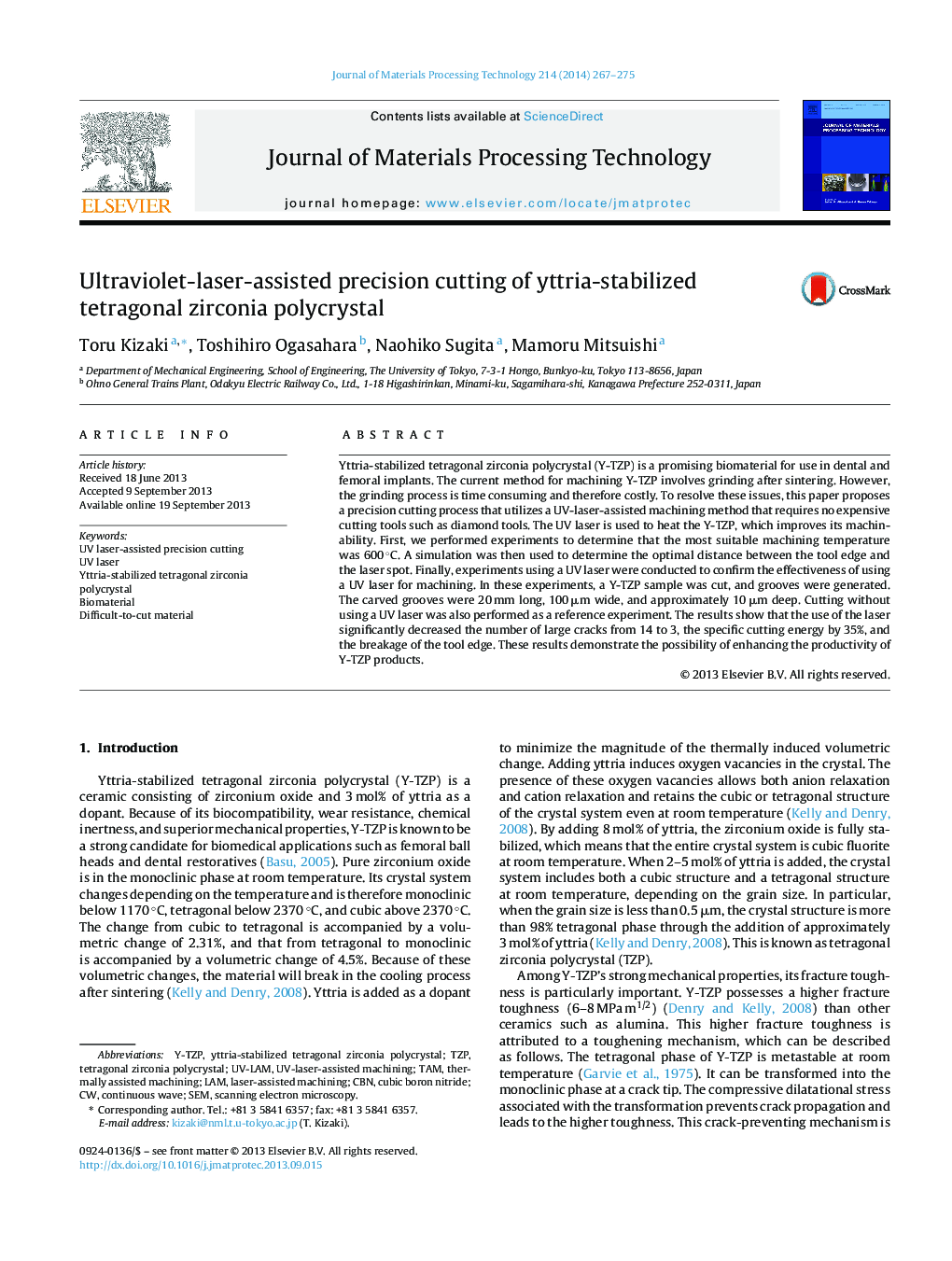| کد مقاله | کد نشریه | سال انتشار | مقاله انگلیسی | نسخه تمام متن |
|---|---|---|---|---|
| 10418708 | 903206 | 2014 | 9 صفحه PDF | دانلود رایگان |
عنوان انگلیسی مقاله ISI
Ultraviolet-laser-assisted precision cutting of yttria-stabilized tetragonal zirconia polycrystal
دانلود مقاله + سفارش ترجمه
دانلود مقاله ISI انگلیسی
رایگان برای ایرانیان
کلمات کلیدی
CBNY-TZPThermally assisted machiningTZPBiomaterial - بیومتریال، بیوماده یا زیست مادهTAM - تامLAM - لامUV laser - لیزر UVlaser-assisted machining - ماشینکاری با کمک لیزرSEM - مدل معادلات ساختاری / میکروسکوپ الکترونی روبشیDifficult-to-cut material - مواد سنگین به برشcontinuous wave - موج مداومScanning electron microscopy - میکروسکوپ الکترونی روبشیCubic boron nitride - نیترید بور بورTetragonal zirconia polycrystal - پلی کریستال زیرکونی تتراگونال
موضوعات مرتبط
مهندسی و علوم پایه
سایر رشته های مهندسی
مهندسی صنعتی و تولید
پیش نمایش صفحه اول مقاله

چکیده انگلیسی
Yttria-stabilized tetragonal zirconia polycrystal (Y-TZP) is a promising biomaterial for use in dental and femoral implants. The current method for machining Y-TZP involves grinding after sintering. However, the grinding process is time consuming and therefore costly. To resolve these issues, this paper proposes a precision cutting process that utilizes a UV-laser-assisted machining method that requires no expensive cutting tools such as diamond tools. The UV laser is used to heat the Y-TZP, which improves its machinability. First, we performed experiments to determine that the most suitable machining temperature was 600 °C. A simulation was then used to determine the optimal distance between the tool edge and the laser spot. Finally, experiments using a UV laser were conducted to confirm the effectiveness of using a UV laser for machining. In these experiments, a Y-TZP sample was cut, and grooves were generated. The carved grooves were 20 mm long, 100 μm wide, and approximately 10 μm deep. Cutting without using a UV laser was also performed as a reference experiment. The results show that the use of the laser significantly decreased the number of large cracks from 14 to 3, the specific cutting energy by 35%, and the breakage of the tool edge. These results demonstrate the possibility of enhancing the productivity of Y-TZP products.
ناشر
Database: Elsevier - ScienceDirect (ساینس دایرکت)
Journal: Journal of Materials Processing Technology - Volume 214, Issue 2, February 2014, Pages 267-275
Journal: Journal of Materials Processing Technology - Volume 214, Issue 2, February 2014, Pages 267-275
نویسندگان
Toru Kizaki, Toshihiro Ogasahara, Naohiko Sugita, Mamoru Mitsuishi,